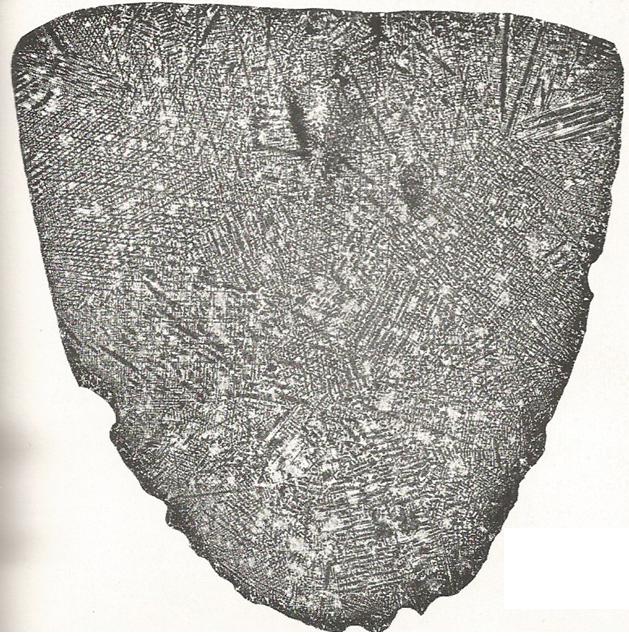Experimental study of iron and steel making processes in ancient India

Microstructure of the Indian Wootz Steel used for making the famous “Damascus Blade”
In ancient times, iron was produced by the solid state reduction of iron ore in a variety of furnaces ranging from pit furnace to shaft furnace. Charcoal was the most widely used reducing agent cum heat supplier. The product obtained after reduction was porous, and hence it was hot forged to a fully dense material. This product is called “Wrought Iron”. This material was basically pure iron having a moderate amount of Carbon. The salient feature of this material was that it contained non-metallic inclusions (NMI), which originated from the starting iron ore, as no liquid state refining was carried out. The mechanical properties of wrought iron greatly depend on the % Carbon and the amount NMI present in the material, which in turn depends on the process parameters, such as fuel/air ratio and the effectiveness of hot forging.
Wrought iron production is a solid state process, and hence there is no refining possible during manufacture in the sense that the non-metallic inclusions present in it are not removed. To achieve this, ancient Indians developed a process in which raw material (i.e., wrought iron) was melted, which resulted in the separation of low density NMI on the top of the melt which was separated. This resulted in a very good material in terms of mechanical properties. Today, this material is known as “Steel” in the modern terminology.
In ancient times, Indians used two types of processes for making steel as given below:
(a) Carburization - cum - melting of Wrought Iron.
(b) Co-fusion of Wrought Iron and Cast Iron Prills.
No work has been carried out to date to study the details of the above two processes in order to find out the exact methodology and the difficulties faced by ancient Indians. There are evidences that India produced high carbon cast iron by reducing iron ores in the furnaces for making wrought iron. This could have been possible due to the use of very high fuel to air ratio. It would also be interesting to investigate the optimum fuel to air ratio for making cast irons. The project involves experimental investigation of the processes used by ancient Indians for the following:
1. Iron making in a pit/shaft furnace and especially under different fuel to air ratio.
2. Steel making by carburization-cum-melting of wrought iron in a closed crucible.
3. Steel making by co-fusion of wrought iron and cast iron prills in a crucible.








